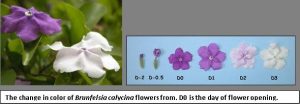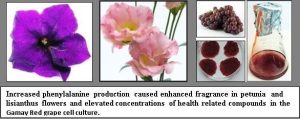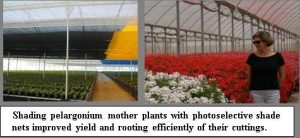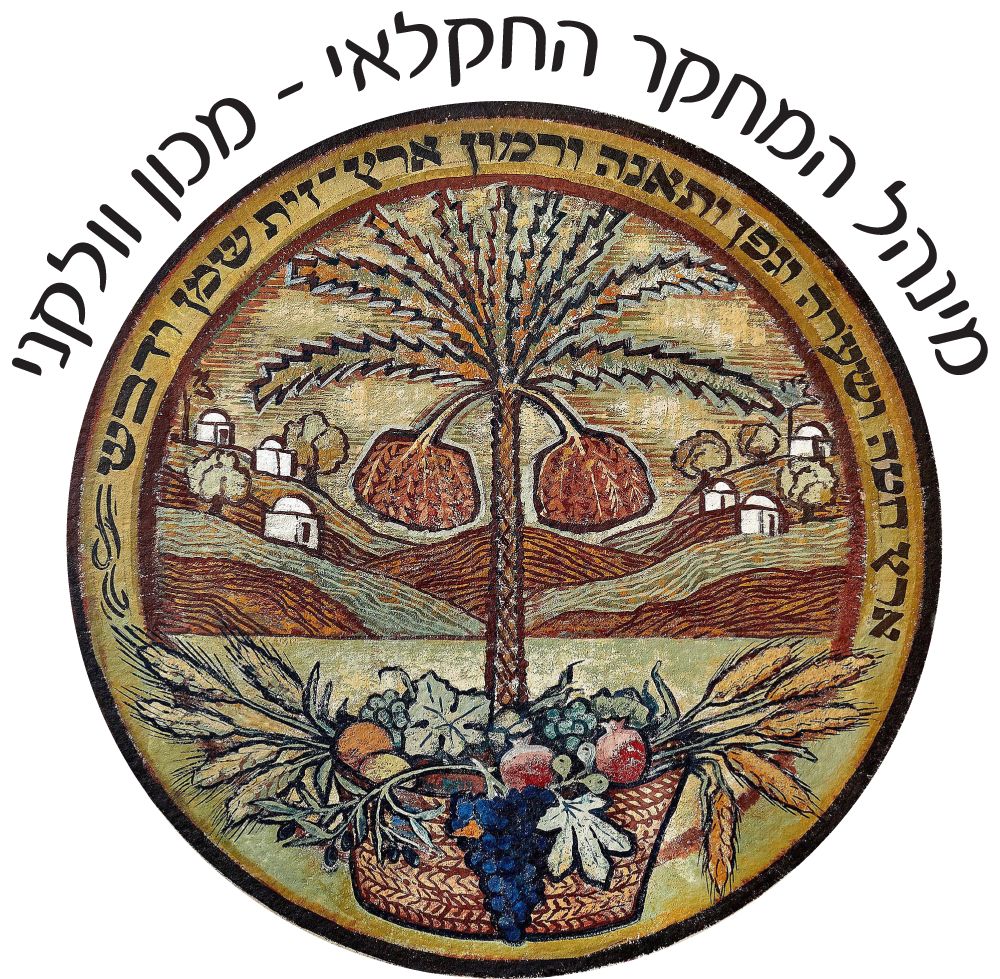Michal Oren-Shamir Full Professor
Emerita
- Institute of Plant Sciences
- Retirees
- Room no. 2022, Fruit breeding & genetics building
- +972-543043338
- +972-39683840
Education
-
1979-1982
B.Sc. in Biology, the Hebrew University, Jerusalem (coursework completed in U.C. Berkeley in the academic year 1981/82)
-
1982-1984
M.Sc. degree in Comparative Biochemistry, University of California, Berkeley. Thesis topic: "Characterization of the variant form SV40 DNA isolated from human cells transformed by Wild Type SV40 virus", supervised by Dr. James C. Bartholomew in the Lawrence Berkeley Laboratory
-
1984-1989
Ph.D. degree in Biological Chemistry, Biochemistry Department, the Weizmann Institute of Science. Thesis topic: “Osmoregulatory metabolism in the unicellular alga Dunaliella salina". Thesis supervisor: Prof. Mordhay Avron. Research included also in vivo NMR spectroscopy, supervised by Prof. Hadassa Degani (Isotope Department)
-
1989-1991
Postdoctoral fellow, Waksman Institute of Microbiology, Rutgers University, New Brunswick, NJ, USA. Research topic: A search for chromoplast-specific genes and proteins in the sweet pepper Capsicum annuum. Host: Prof. Carl A. Price
-
1991-1994
Postdoctoral fellow, Plant Genetics Dept., the Weizmann Institute. Research topic: The effect of point mutations in the D1 protein of photosystem II on herbicide binding, and isolation of PSII reaction centers from cyanobacteria. Hosts: Prof. Meir Edelman, Plant Genetics Dept. and Prof. Avigdor Sherz
Research Interests
(1) Revealing the enzymatic process of active anthocyanin degradation
(2) Phenylpropanoid pathways affecting pigmentation and fragrance
(3) Applied research for improving pigmentation in ornamentals
(4) Effect of colored nets on the yield and quality of ornamental crops
Revealing the enzymatic process of active anthocyanin degradation
How are anthocyanins degraded in plants? What role does the pigment catabolism process play in the final determination of pigment concentration in flower foliage or fruit? These are two of the major current research questions of my group. In contrast to the detailed knowledge available on the biosynthesis of anthocyanins, very little is known about the stability and degradation of these pigments in plant tissue.
Our model system is Brunfelsia calycina flowers, which change color from dark purple to white within two days. We are characterizing in planta anthocyanin turnover and degradation. In particular, we have identified, for the first time, an anthocyanin degrading enzyme, responsible for flower color change. We are also characterizing the metabolomics and genomic changes occurring during the change of color in Brunfelsia flowers, accompanied by production of flower fragrant compounds.

Phenylpropanoid pathways affecting pigmentation and fragrance
We expanded our studies to interactions between anthocyanin and other phenyproanoid pathways, especially the benzenoid pathway responsible for production of fragrant compounds. Parallel to the degradation of anthocyanins, Brunfelsia flowers produce fragrant volatiles, making this flower an interesting model for studying the relationship between pigment and fragrance production pathways. We use a number of profiling approaches to examine anthocyanin composition, volatile compound production, metabolite accumulation, and transcriptional and protein changes occurring during and after flower opening.
A second approach for studying the link between the different phenylpropanoid pathways (including anthocyanin pigments and benzenoid folatiles) is overexpressing the production of aromatic amino acids and in particular phenylalanine. The tool that we use for overproducing phenylalanine, the source for production of both anthocyanins and benzenoids is a feedback insensitive enzyme along the shikimate pathway. We are currently studying the metabolic and genomic effect of increased phenylalanine concentrations in genetically engineered petunia, lisianthus and in a grape cell culture.

Applied research for improving pigmentation in ornamentals
In order to improve and increase the quality of horticultural products, we develop solutions for optimization of anthocyanin pigmentation, based on characterization of the best conditions for anthocyanin accumulation in ornamental crops. This research includes testing best quality greenhouse covers for maximum pigmentation, and treatments for increasing pigmentation in plants, including hormonal treatments for inducing biosynthesis and treatments for stabilizing the anthocyanins in the plant tissues.
Effect of colored nets on the yield and quality of ornamental crops
The technology of plant production under colored shade nets, instead of the black neutral net, is based on fact that plants are extremely sensitive to light quality, and that the adaptation to light changes occurs via a wide and complex network of photoreceptors. We were the first to use photoselective nets to improve the quality and yield of crops and are continuing experiments using this technology. We showed that by changing the direction and quality of the light by filtering sunlight through photoselective nets, we can improve the quality of ornamentals and increase their yield. At present we are focusing our work on testing the effect of shading mother-plants with photoselective nets, on the rooting of their cuttings.

Research Areas
- Anthocyanin degradation
Publications/Articles
- Kumar V., Nadarajan S., Kumari A., Cohen Y., Klingbel T., Bar E., Lewinsohn E., Elad Y., Poverenov E., and Oren-Shamir M. (2024). Phenylalanine encapsulation into an amphiphilic carboxymethyl cellulose-derivative enhanced plant uptake and metabolism efficiency. Postharvest Biology and Technology, 211, 112812.
- Kumar V., Nadarajan S., Boddupally D., Wang R., Bar E., Davidovich‐Rikanati R., Doron-Faigenboim A., Alkan N., Lewinsohn E., Elad Y. and Oren‐Shamir M. (2024). Phenylalanine treatment induces tomato resistance to Tuta absoluta via increased accumulation of benzenoid/phenylpropanoid volatiles serving as defense signals. The Plant Journal.
- Kumari A., Kumar V., Ovadia R. and Oren-Shamir M. (2023). Phenylalanine in motion: A tale of an essential molecule with many faces. Biotechnology Advances, 108246.
- Wang R., Kumar V., Sikron-Persi N., Dynkin I., Weiss D., Perl A., Fait A. and Oren-Shamir, M. (2022). Over 1000-Fold Synergistic Boost in Viniferin Levels by Elicitation of Vitis vinifera cv. Gamay Red cell cultures over accumulating phenylalanine. J. Agric. Food Chem., 70(16), 5049-5056.
- Kumar V., Elazari Y., Ovadia R., Bar E., Nissim-Levi, A., Carmi N., Lewinsohn E. and Oren-Shamir M. (2021). Phenylalanine treatment generates scent in flowers by increased production of phenylpropanoid-benzanoid volatiles. Postharvest Biol. Technol., 181: 111657.
- Wang R., Lenka S., Kumar V., Sikron-Persi N., Dynkin I., Weiss D., Perl A., Fait A. and Oren-Shamir M. (2021). A synchronized increase of stilbenes and flavonoids in metabolically engineered Vitis vinifera cv. Gamay Red cell culture. J. Agric. Food Chem., 69(28): 7922-7931.
- Wang R., Lenka S., Kumar V., Gashu K., Sikron-Persi N., Dynkin I., Weiss D., Perl A., Fait A. and Oren-Shamir M. (2021). Metabolic engineering strategy enables a hundred-fold increase in viniferin levels in Vitis vinifera cv. Gamay Red cell culture. J. Agric. Food Chem. 69(10): 3124-3133.
- Fang F., Oliva M., Ovadia R., Nissim-Levi A., Kumar V., Want R., Neeman A., Zaccai M., Lewinsohn E. and Oren-Shamir M. (2021). Increased substrate availability reveals the potential of scentless lisianthus flowers in producing fragrant benzenoid-phenylpropanoids. Physiol. Plant. 172: 19-28. Sudheeran P.K., Sela N., Carmeli-Weissberg M., Ovadia R., Pnada S., Feygenberg O., Maurer D., Oren-Shamir M., Aharoni A. and Alkan N. (2021). Induced defense response in red mango fruit against Colletotrichum gloeosporioides. Hortic. Res. 8(1): 1-11.
- Kumar V., Hatan E., Bar E., Davidovich-Rianati R., Doron-Faigenboim A., Spitzer-Rimon B., Elad Y., Alkan N., Lewinsohn E. and Oren-Shamir M. (2020). Phenylalanine increases chrysanthemum flower immunity agains Botrytic cinerea attack. Plant J. 104: 226-240.
- Oliva M., Hatan E., Kumar V., Galsurker O., Nissim-Levi A., Ovadia, R., Galili G. Lewinsohn E., Elad Y., Alkan N. and Oren-Shamir M. (2020). Increased phenylalanine levels in plant leaves reduces susceptibility to Botrytis cinerea. Plant Sci. 290: 110289.
- Nissim-Levi A., Kitron M., Nishri Y., Ovadia R., Forer I., and Oren-Shamir M. (2019). Effects of blue and red LED lights on growth and flowering of Chrysanthemum morifolium. Sci. Hort. 254: 77-83.
- Fang F., Oliva M., Ehi‐Eromosele S., Zaccai M., Arazi T. and Oren‐Shamir, M. (2018). Successful floral‐dipping transformation of post‐anthesis lisianthus (Eustoma grandiflorum) flowers. Plant J. 96(4): 869-879.
- Oliva M., Bar E., Ovadia R., Perl A., Galili G., Lewinsohn E., and Oren-Shamir, M. (2017). Phenylpyruvate contributes to the synthesis of fragrant benzenoids-phenylpropanoids in Petunia× hybrida flowers. Front. Plant Sci. 8: 769.
- Manela N., Oliva M., Ovadia R., Sikron-Persi N., Ayenew B., Fait A., Galili G., Perl A., Weiss D. and Oren-Shamir M. (2015). Phenylalanine and tyrosine levels are rate-limiting factors in production of health promoting metabolites in Vitis vinifera cv. Gamay Red cell suspension. Front. Plant Sci. 6: 538.
- Oliva, M., Ovadia, R., Perl, A., Bar, E., Lewinsohn, E., Galili, G., and Oren‐Shamir, M. (2015). Enhanced formation of aromatic amino acids increases fragrance without affecting flower longevity or pigmentation in Petunia× hybrida. Plant Biotechnol. J. 13(1): 125-136.
- Zipor G.S, Duarte P, Carqueijeiro I., Shahar L., Ovadia R., Teper-Bamnolker P., Eshel D., Levi Y., Doron-Faigenboim A., Sottomayor M. and Oren-Shamir M. (2014). In planta anthocyanin degradation by a vacuolar class III peroxidase in Brunfelsia Calycina flowers. New Phytol. 205(2): 653-665.
- Nissim-Levi A.S, Ovadia R., Kagan S. and Oren-Shamir M. (2014). Shading stock plants with photoselective nets affects the yield and rooting quality of their cuttings. J. Hortic. Sci. Biotechnol. 89: 693-699.
- Nissim-Levi A.S, Kagan S, Ovadia R., Forrer I., Riov J. and Oren-Shamir M. (2013). Effects of temperature and auxin treatment on fruit set and pigmentation of Dodoneae 'Dana'. Sci. Hort. 160, 172-176.
- Ovadia R., Oren-Shamir M., Kapltinov T., Zutahy Y., Lichter A. and Lurie S. (2013). Effects of plant growth regulators and high temperature on colour development in ‘Crimson Seedless' grapes. J. Hort. Sci. and Biotech. 88, 387-392.
- Sinilal B., Ovadia R., Nissim-Levi A., Perl A., Weissberg M. and Oren-Shamir M. (2011). Increased accumulation and decreased catabolism of anthocyanins in red grape cell suspension culture following magnesium treatment. Planta 234: 61-71.
- Bar-Akiva A.*, Ovadia R.*, Rogachev I, Bar-Or C., Bar E., Freiman Z., Nissim-Levi A., Gollop N., Lewinshon E., Aharoni A., Weiss D., Koltai H and Oren-Shamir M. (2010). Metabolic networking in Brunfelsia calycina petals after flower opening. J. Exp. Bot. 61: 1393-1403.
- Ovadia R., Dori I., Nissim-Levi A., Shahak Y. and Oren-Shamir M. (2009). Coloured shade-nets influence stem length, time to flower, flower number and inflorescence diameter in four ornamental cut-flower crops. J. Hortic. Sci. Biotechnol. 84: 161-166.
- Nissim-Levi A.S, Farkash L., Hamburger D., Ovadia R., Forer I., Kagan S. and Oren-Shamir M. (2008). Light-scattering shade net increases branching and flowering in ornamental pot plants. J. Hortic. Sci. Biotechnol. 83: 9-14.
- Nissim-Levi A.S, Ovadia R., Forer I. and Oren-Shamir M. (2007). Increased anthocyanin accumulation in ornamental plants due to magnesium treatment. J. Hortic. Sci. Biotechnol. 82: 481-487.
- Vaknin H.S, Bar-Akiva A., Ovadia R., Nissim-Levi A., Forer I., Weiss D. and Oren-Shamir M. (2005). Active anthocyanin degradation in Brunfelsia calycina (Yesterday-Toda-Tomorrow) flowers. Planta 222: 19-26.
- Nissim-Levi A.S, Kagan S., Ovadia R. and Oren-Shamir M. (2003). Effects of temperature, UV-light and magnesium on anthocyanin pigmentation in Cocoplum leaves. J. Hortic. Sci. Biotechnol. 78: 61-64.
- Dela G., Or E., Ovadia R., Nissim-Levi A., Weiss D. and Oren-Shamir M. (2003). Changes in anthocyanin concentration and composition in ‘Jaguar' rose flowers due to transient high-temperature conditions. Plant Sci. 164: 333-340.
- Shaked-Sachray L.S, Weiss D., Reuveni M., Nissim-Levi A. and Oren-Shamir M. (2002). Increased anthocyanin accumulation in aster flowers at elevated temperatures due to Magnesium treatment. Physiol. Plant. 114: 559-565.
- Oren-Shamir M., Gussakovsky E. E., Shpiegel E., Nissim-Levi A., Ratner K., Ovadia R., Giller Y. and Shahak Y. (2001). Coloured shade nets can improve the yield and quality of green decorative branches of Pittosporum variegatum. J. Hortic. Sci. Biotechnol. 76: 353-361.
- Oren-Shamir M., Dela G., Ovadia R., Nissim-Levi A., Philosoph-Hadas S. and Meir M. (2001). Differentiation between petal blueing and senescence of cut 'Mercedes' rose flowers. J. Hortic. Sci. Biotechnol. 76: 195-200.
- Oren-Shamir M., Weiss D., and Shaked-Sachray L., Nissim-Levi A. (2000). Effect of growth temperature on Aster flower development HortScience. 35: 28-29.
- Oren-Shamir M. and Nissim-Levi A. (1999). Temperature and gibberellin effect on growth and anthocyanin pigmentation in Photinia leaves. J. Hortic. Sci. Biotechnol. 74: 355-360.
- Oren-Shamir M., Shaked-Sachray L, Nissim-Levi A and Ecker R. (1999). Anthocyanin pigmentation of lisianthus flower petals. Plant Sci. 140: 81-86.
- Oren-Shamir M. and Levi-Nissim A. (1997). UV-Light effect on the leaf pigmentation of Cotinus coggygria 'Royal Purple'. Sci. Hort. 71: 59-66.
- Oren-Shamir M. and Levi-Nissim A. (1997). Temperature effect on the leaf pigmentation of Cotinus coggygria 'Royal Purple'. J. of Hort. Sci. 72 (3): 425-432.

